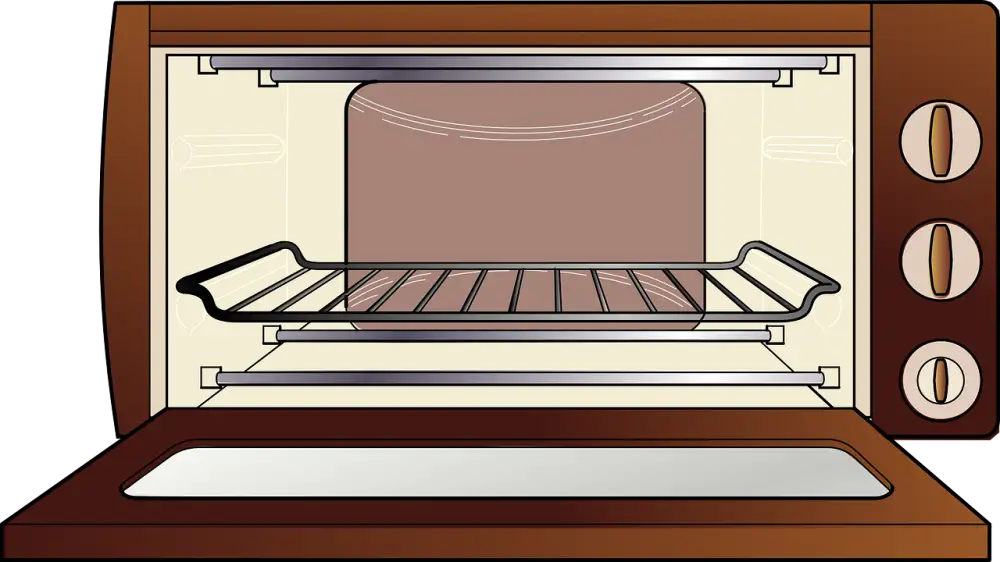Master the Art of Cooking with a Convection Oven: A Step-by-Step Guide for Home Chefs

- Understanding the Basics of Convection Cooking
- Preparing Your Convection Oven for Use
- Adjusting Cooking Times and Temperatures
- Utilizing the Convection Setting for Baking
- Mastering Roasting and Broiling in a Convection Oven
- Tips for Properly Using Cookware in a Convection Oven
- Cleaning and Maintaining Your Convection Oven
- Troubleshooting Common Issues with Convection Ovens
Convection ovens have become increasingly popular among home chefs for their ability to cook food faster and more evenly. Unlike traditional ovens, which rely on radiant heat, convection ovens use a fan to circulate hot air around the food. This constant circulation of hot air ensures that the food is cooked uniformly from all sides, resulting in perfectly browned and crispy dishes. Whether you are a seasoned chef or just starting out in the kitchen, mastering the art of cooking with a convection oven can greatly enhance your culinary skills. In this step-by-step guide, we will explore the basics of convection cooking, how to properly prepare your oven for use, adjust cooking times and temperatures, utilize the convection setting for baking, master roasting and broiling techniques, choose the right cookware, clean and maintain your oven, and troubleshoot common issues that may arise. With these tips and techniques at your disposal, you will be well on your way to creating delicious meals that are sure to impress family and friends. So let's dive in and unlock the full potential of your convection oven!
Understanding the Basics of Convection Cooking
Convection cooking is a method that utilizes the circulation of hot air to cook food evenly and efficiently. Unlike traditional ovens, which rely on radiant heat, convection ovens have a fan that circulates the air inside. This constant movement of hot air helps to distribute heat more evenly, resulting in faster cooking times and better browning.
The key principle behind convection cooking is that the hot air surrounds the food from all sides, ensuring that it cooks evenly. This means that you can cook multiple dishes at once without worrying about one dish getting overcooked while another remains undercooked.
Convection cooking also allows for lower cooking temperatures compared to traditional ovens. The circulating hot air transfers heat more effectively, allowing you to reduce cooking temperatures by about 25 degrees Fahrenheit. However, it's important to note that cooking times may need adjustment when using a convection oven.
One of the main advantages of convection cooking is its ability to create crispy and golden-brown exteriors while keeping the interior moist and tender. The circulating hot air helps to remove moisture from the surface of the food, resulting in a desirable texture and appearance.
It's important to understand that not all recipes are suitable for convection cooking. Delicate baked goods like soufflés or custards may not fare well in a convection oven due to the strong airflow. However, most recipes can be easily adapted by reducing both temperature and time.
By understanding the basics of convection cooking, you can take full advantage of your convection oven's capabilities and elevate your culinary skills to new heights. So let's dive into how you can prepare your convection oven for use and start experimenting with this fantastic cooking technique!
Preparing Your Convection Oven for Use
Before you start cooking with your convection oven, it's important to properly prepare it for use. Here are a few steps to follow:
1. Read the Manual: Familiarize yourself with the specific instructions provided by the manufacturer. This will help you understand any unique features or settings of your convection oven.
2. Clean the Oven: Ensure that your convection oven is clean and free from any debris or food particles. Use warm soapy water and a soft cloth to wipe down the interior and exterior surfaces.
3. Remove Accessories: Take out any removable accessories such as racks, trays, or pans from the oven. Clean them separately using mild detergent and water.
4. Adjust Shelves: If your convection oven has adjustable shelves, arrange them according to the height needed for your recipe. This will ensure even heat distribution during cooking.
5. Preheat the Oven: Preheating is crucial for achieving optimal cooking results in a convection oven. Set the desired temperature and allow the oven to preheat fully before placing your food inside.
By following these simple steps, you'll be well on your way to utilizing your convection oven effectively and creating delicious culinary masterpieces in no time!
Adjusting Cooking Times and Temperatures
One of the key advantages of cooking with a convection oven is its ability to cook food faster and more evenly. However, it's important to note that this means you'll need to adjust your cooking times and temperatures compared to traditional ovens.
When using a convection oven, you can typically reduce the cooking time by about 25%. This is because the hot air circulating inside the oven helps to cook the food more efficiently. For example, if a recipe calls for baking at 350°F for 30 minutes in a regular oven, you can reduce the temperature to 325°F and bake for approximately 22-23 minutes in a convection oven.
In addition to adjusting the cooking time, you may also need to lower the temperature slightly. Convection ovens tend to cook food faster at lower temperatures than conventional ovens. It's recommended to reduce the temperature by about 25°F when using the convection setting.
Keep in mind that these adjustments may vary depending on your specific convection oven model. It's always best to consult your oven's user manual for precise guidelines on adjusting cooking times and temperatures.
By mastering the art of adjusting cooking times and temperatures in your convection oven, you'll be able to achieve perfectly cooked dishes every time. So don't be afraid to experiment and find what works best for your favorite recipes!
Utilizing the Convection Setting for Baking
One of the greatest advantages of a convection oven is its ability to bake with precision and efficiency. The convection setting, when properly used, can result in perfectly baked goods every time.
To utilize the convection setting for baking, start by preheating the oven to the desired temperature. It is important to note that when using convection, you may need to reduce the temperature by 25 degrees Fahrenheit compared to traditional baking recipes.
Next, prepare your baking pan or sheet with parchment paper or a light coating of cooking spray. This will help prevent sticking and ensure easy removal of your baked goods.
When placing your items in the oven, make sure there is enough space between them for proper air circulation. This allows the hot air to evenly distribute and promote even browning.
Keep in mind that convection baking often results in faster cooking times. Therefore, it is crucial to monitor your baked goods closely and adjust the cooking time accordingly. Start checking for doneness a few minutes earlier than usual and continue until they are golden brown and cooked through.
Remember that convection ovens excel at producing crispy crusts on breads and pastries. However, for delicate items like soufflés or custards, it may be best to stick with conventional baking methods as convection can cause them to deflate.
By utilizing the convection setting for baking, you can achieve professional-level results in your own kitchen. Experiment with different recipes and techniques to unlock the full potential of your convection oven and elevate your baking skills.
Mastering Roasting and Broiling in a Convection Oven
Roasting and broiling are popular cooking methods that can be enhanced with the use of a convection oven. When roasting meats or vegetables, the convection setting helps to evenly distribute heat, resulting in a perfectly cooked dish.
To roast in a convection oven, preheat it to the desired temperature and place the food on a roasting rack or baking sheet. The hot air circulation will ensure that the food cooks evenly from all sides, creating a delicious golden crust while retaining moisture.
When broiling in a convection oven, it is important to adjust the cooking time and temperature accordingly. The intense heat generated by the broiler element combined with the circulating hot air can quickly cook food, so it is essential to keep an eye on it to prevent burning.
To achieve optimal results when broiling, position the food close to the heating element and use a shallow pan or broiler tray to catch any drippings. This method allows for quick searing and browning while maintaining juiciness.
Remember to follow recipe instructions for both roasting and broiling, as different foods require varying cooking times and temperatures. With practice and experimentation, you will soon become adept at using your convection oven for these cooking techniques.
By mastering roasting and broiling in your convection oven, you can elevate your culinary skills and create flavorful dishes with ease. So go ahead, explore new recipes, experiment with different ingredients, and let your convection oven take your cooking to new heights!
Tips for Properly Using Cookware in a Convection Oven
When using a convection oven, it is important to choose the right cookware to ensure optimal cooking results. Here are some tips for properly using cookware in a convection oven:
1. Use lightweight and shallow pans: Convection ovens rely on the circulation of hot air to cook food evenly. Using lightweight and shallow pans allows for better airflow and faster cooking.
2. Avoid dark-colored or non-stick pans: Dark-colored or non-stick pans tend to absorb heat more quickly, which can result in overcooking or burning. Instead, opt for light-colored pans that reflect heat.
3. Use low-sided baking sheets for cookies and pastries: Low-sided baking sheets allow hot air to circulate around the food, resulting in crispy edges and even browning.
4. Choose oven-safe glass or ceramic dishes: Glass or ceramic dishes are ideal for casseroles, gratins, and other baked dishes as they distribute heat evenly. Just make sure they are labeled as oven-safe.
5. Use metal roasting pans for meats: Metal roasting pans with a rack are perfect for roasting meats in a convection oven. The rack elevates the meat, allowing hot air to circulate underneath for even browning.
6. Adjust cooking times and temperatures: When using different types of cookware, it may be necessary to adjust cooking times and temperatures slightly to achieve desired results. Keep an eye on your food while it cooks to avoid overcooking or undercooking.
By following these tips, you can ensure that your cookware is compatible with your convection oven and achieve delicious results every time you use it.
Cleaning and Maintaining Your Convection Oven
Cleaning and maintaining your convection oven is essential for its longevity and optimal performance. Here are some tips to keep your oven in top shape:
1. Regularly clean the interior of the oven using a mild detergent and warm water. Avoid using abrasive cleaners or scrub brushes that may damage the oven's surface.
2. Remove any food spills or residue immediately after each use to prevent them from hardening and becoming difficult to remove later.
3. Clean the oven racks separately by soaking them in warm, soapy water. Scrub off any stubborn stains with a non-abrasive sponge or brush.
4. Wipe down the exterior of the oven with a damp cloth to remove any grease or fingerprints. Use stainless steel cleaner for stainless steel ovens.
5. Clean the oven's fan and filters regularly to ensure proper airflow. Refer to your oven's manual for specific instructions on how to access and clean these components.
6. Check and replace any worn-out gaskets or seals around the door to maintain proper heat retention.
7. Schedule professional maintenance at least once a year to inspect and service any internal components that may require attention.
By following these cleaning and maintenance practices, you can ensure that your convection oven remains in excellent condition, allowing you to continue creating culinary masterpieces effortlessly.
Troubleshooting Common Issues with Convection Ovens
While convection ovens are a great addition to any kitchen, they can sometimes present challenges. Here are some common issues you may encounter and how to troubleshoot them:
1. Uneven Cooking: If your food is cooking unevenly, it could be due to improper placement of the racks. Make sure to position the racks in the center of the oven for even heat distribution.
2. Excessive Browning: If your dishes are browning too quickly or becoming burnt, try reducing the temperature by 25 degrees Fahrenheit and monitoring the cooking time closely.
3. Inaccurate Temperature: To ensure accurate temperature readings, use an oven thermometer to calibrate your convection oven periodically. This will help you adjust cooking times and temperatures accordingly.
4. Fan Noise: Convection ovens have a fan that circulates hot air, which may produce some noise. However, if the noise becomes excessively loud or irregular, it could indicate a problem with the fan motor. Contact a professional for assistance.
5. Steam Buildup: If you notice excessive steam inside your convection oven during baking, it may be due to high moisture content in your recipe or using a covered dish. Reduce moisture levels by removing covers or adjusting recipes accordingly.
By troubleshooting these common issues, you can ensure optimal performance from your convection oven and enjoy delicious meals every time you cook with it!
In conclusion, incorporating a convection oven into your culinary arsenal can greatly enhance your cooking skills. With its ability to circulate hot air evenly, convection ovens ensure that your dishes are cooked to perfection every time. Whether you're baking delicate pastries or roasting a succulent chicken, the convection setting will provide consistent and reliable results. By understanding the basics of convection cooking, adjusting cooking times and temperatures accordingly, and utilizing the appropriate cookware, you'll be well on your way to becoming a master chef in no time. So go ahead, experiment with new recipes and techniques, and let your creativity shine through with the help of a convection oven. Happy cooking!
Published: 17. 12. 2023
Category: Home



